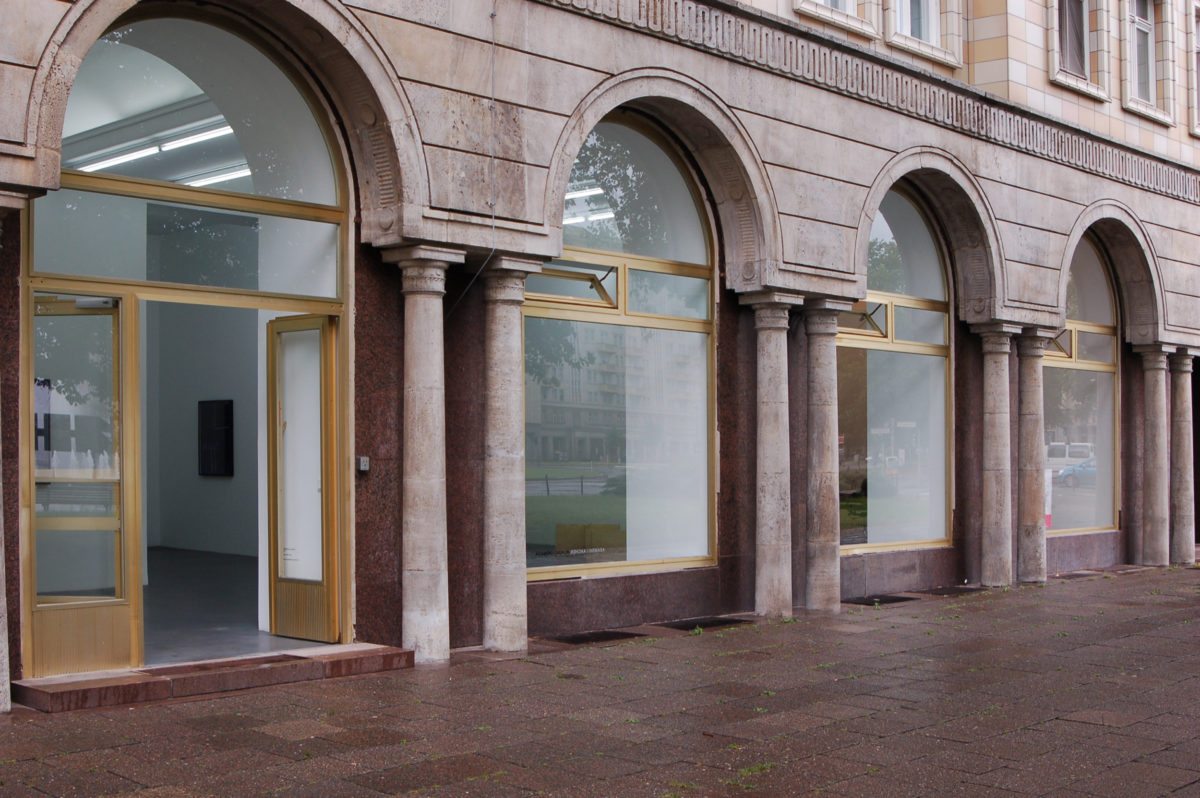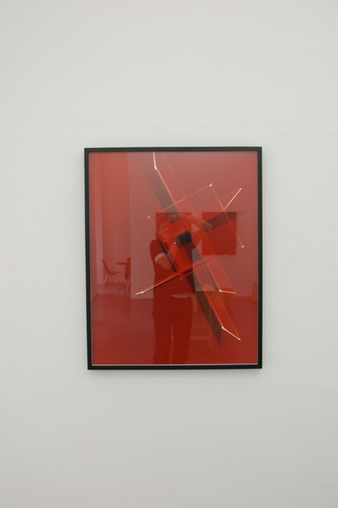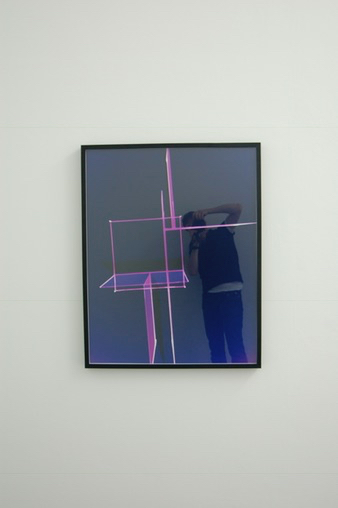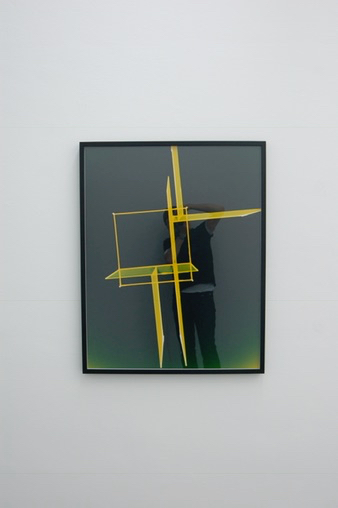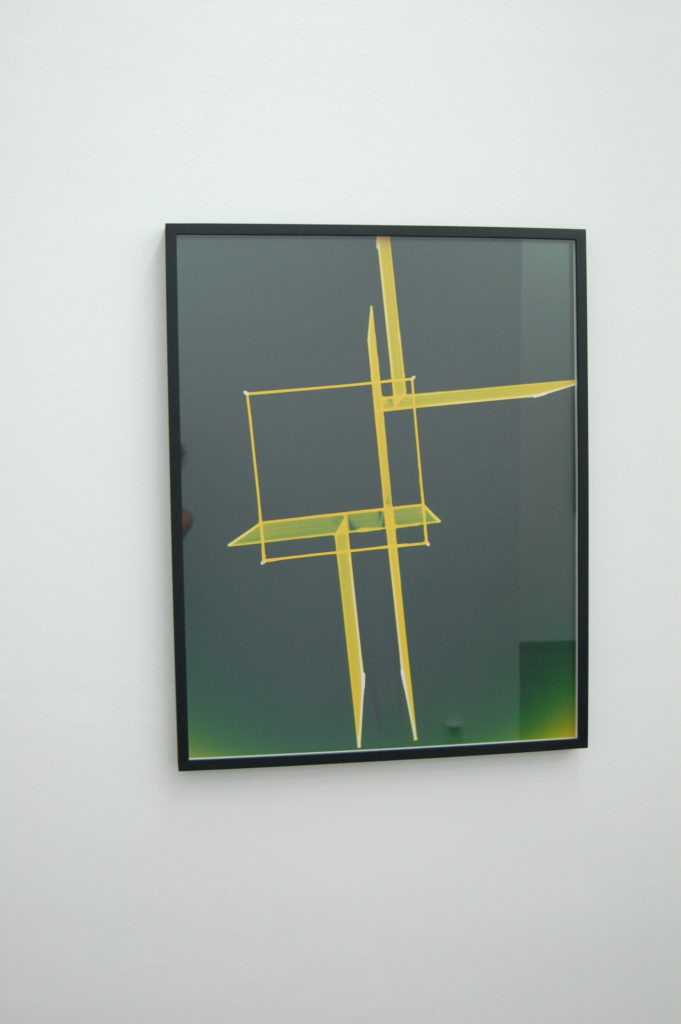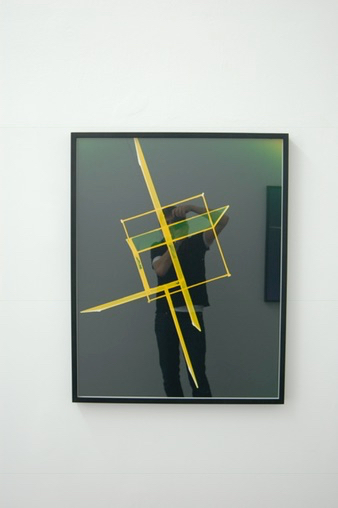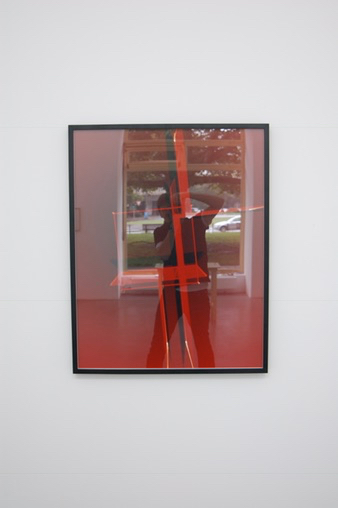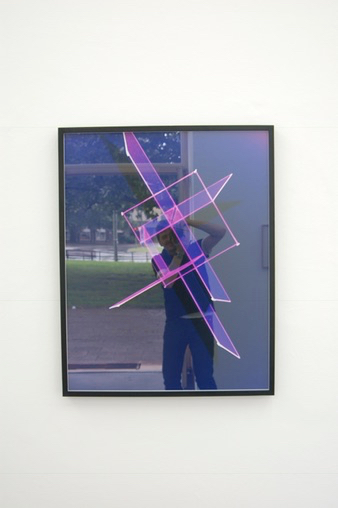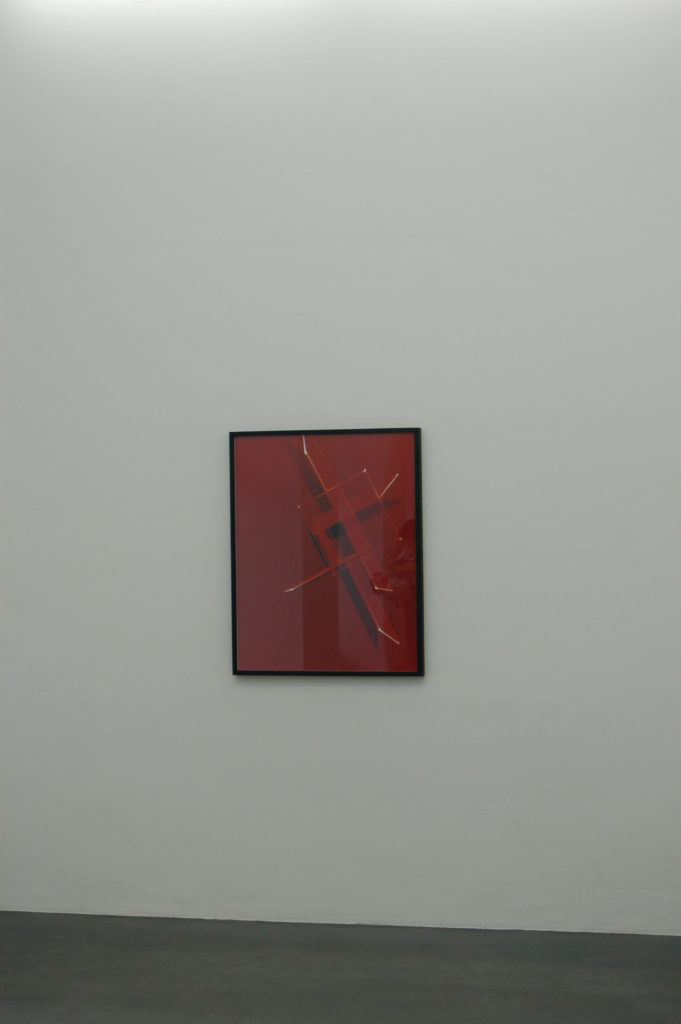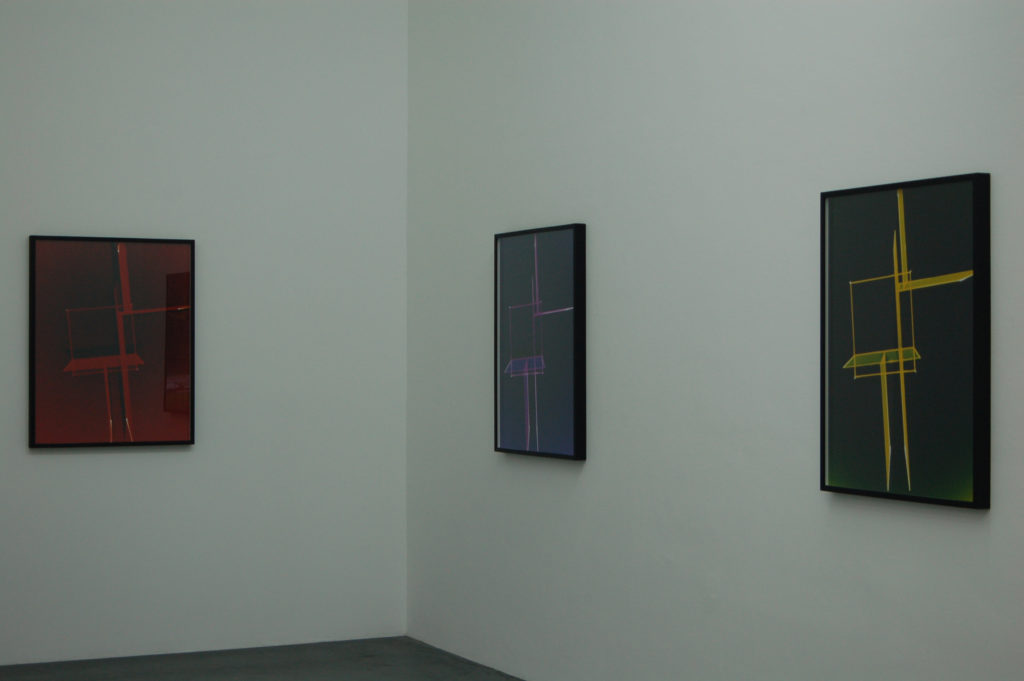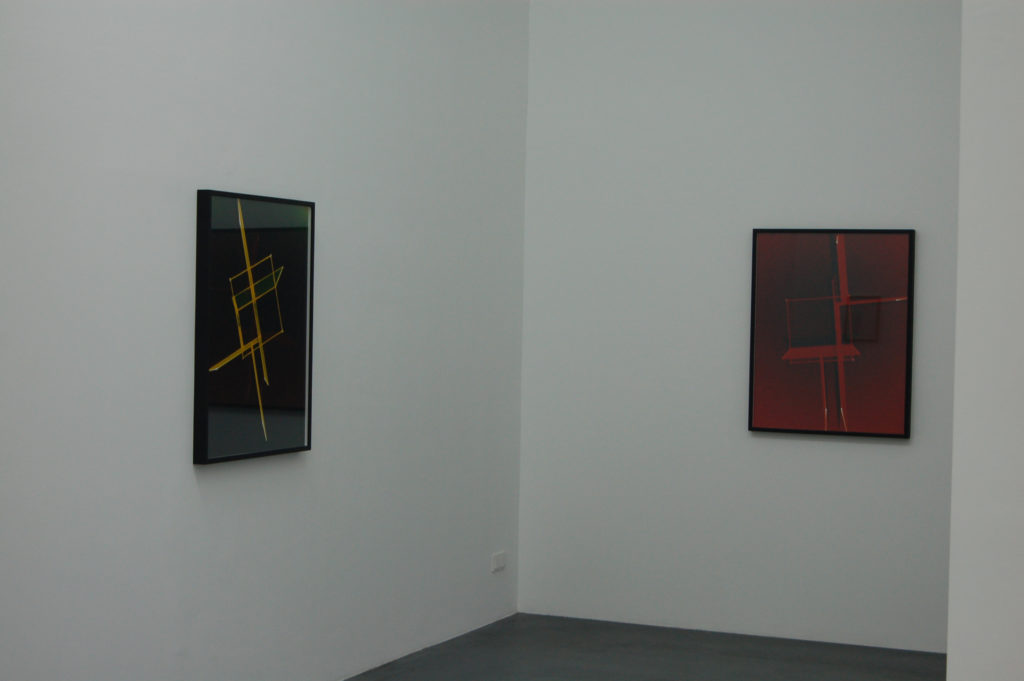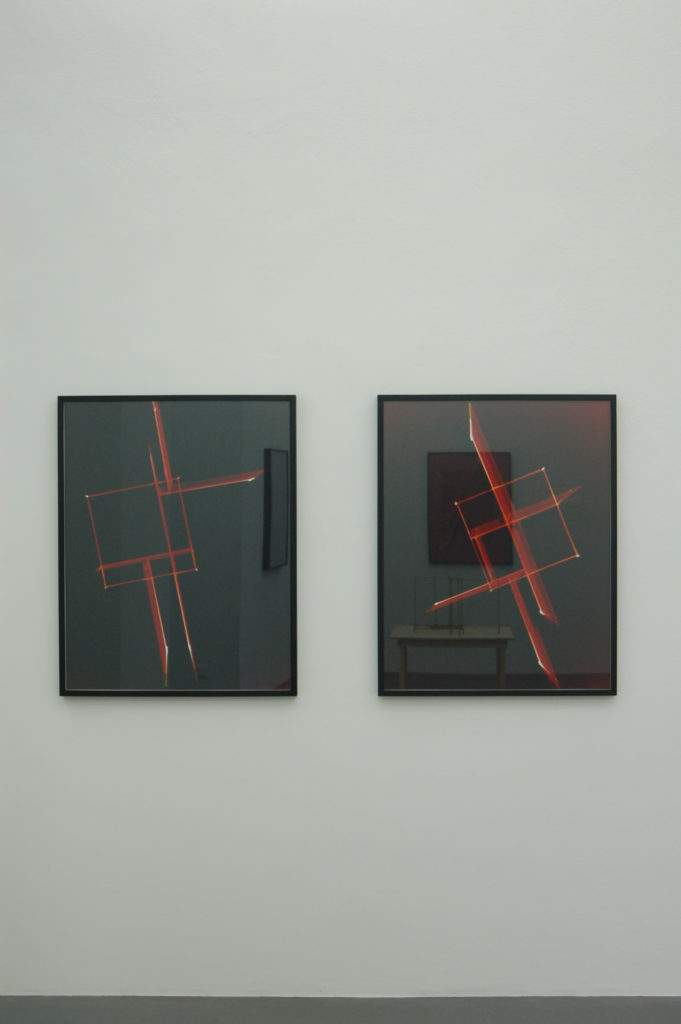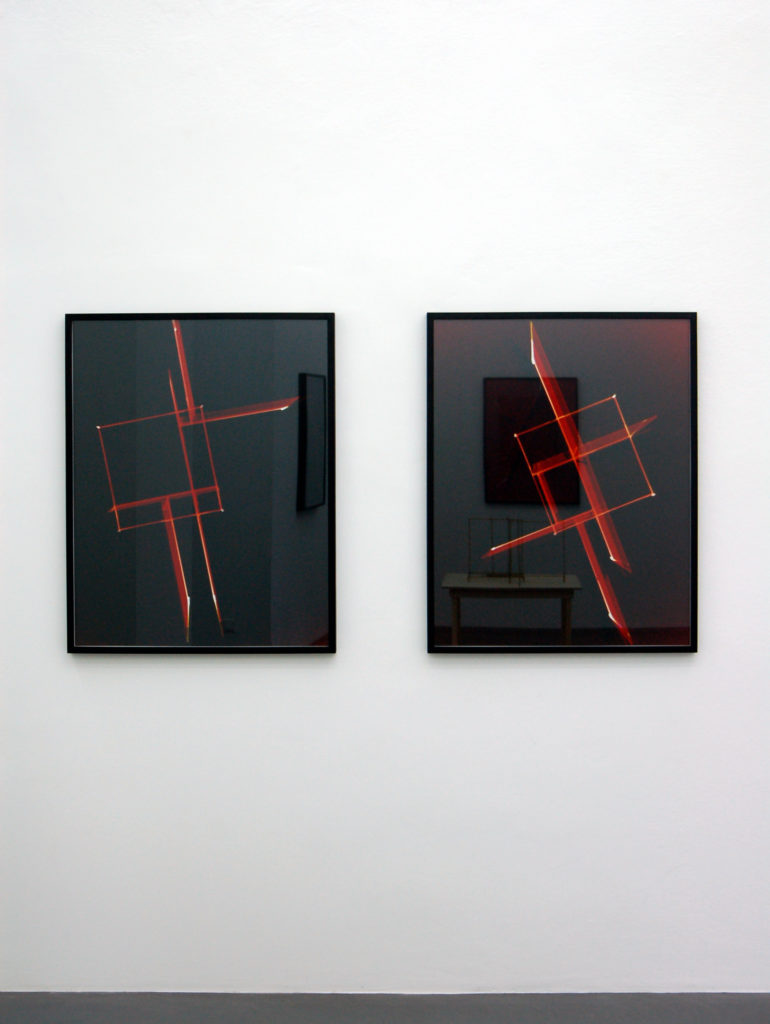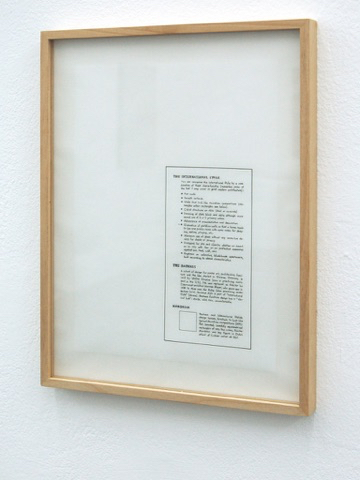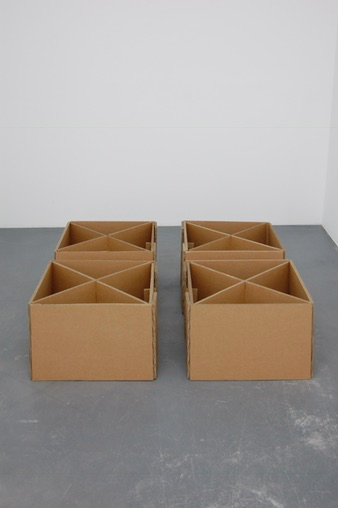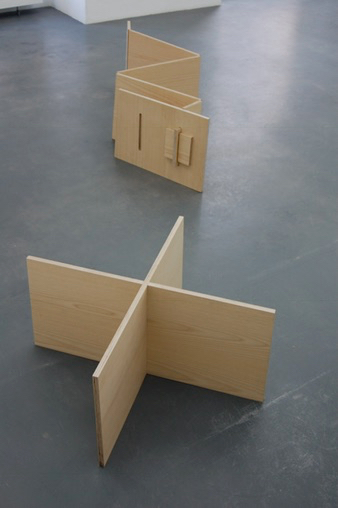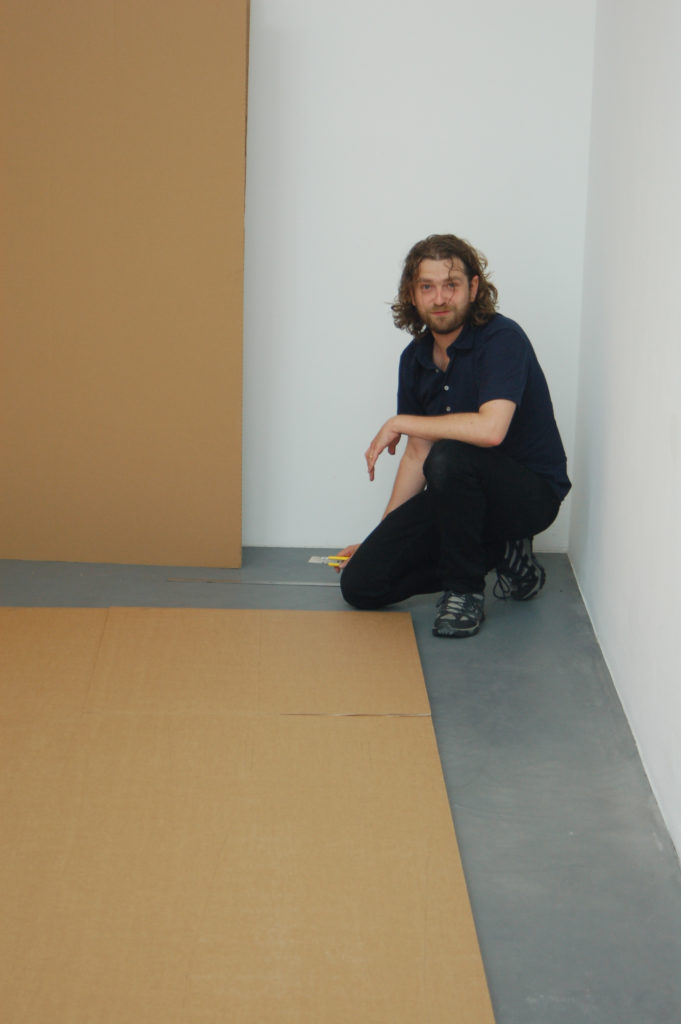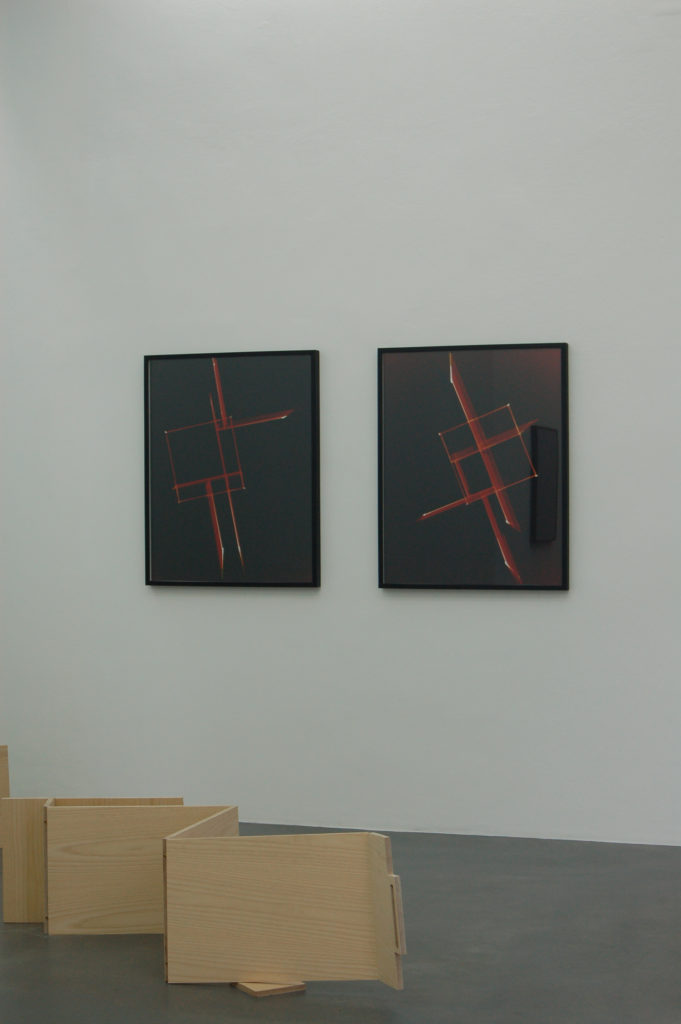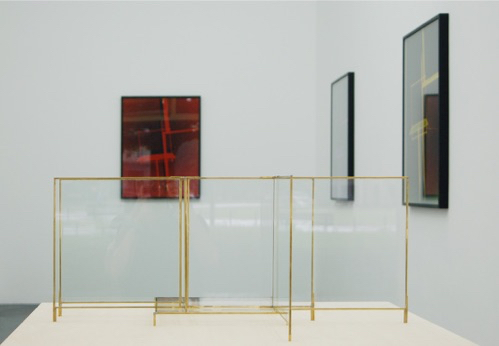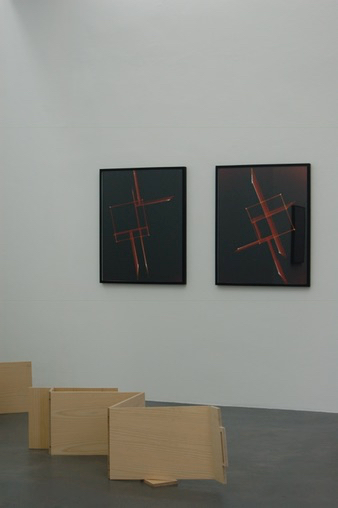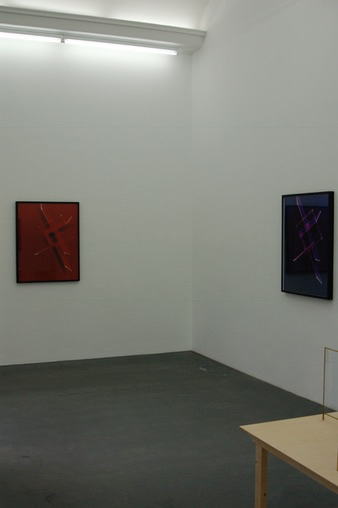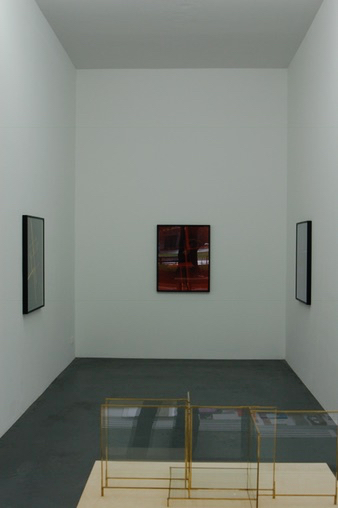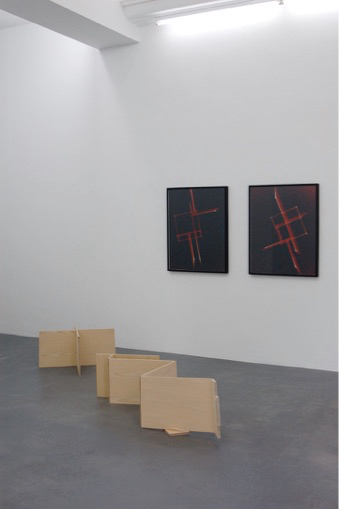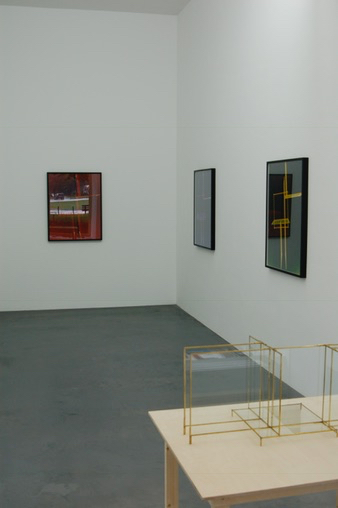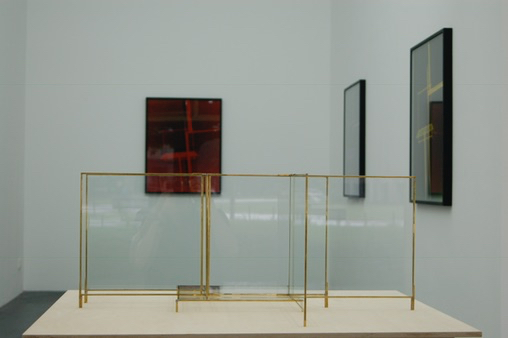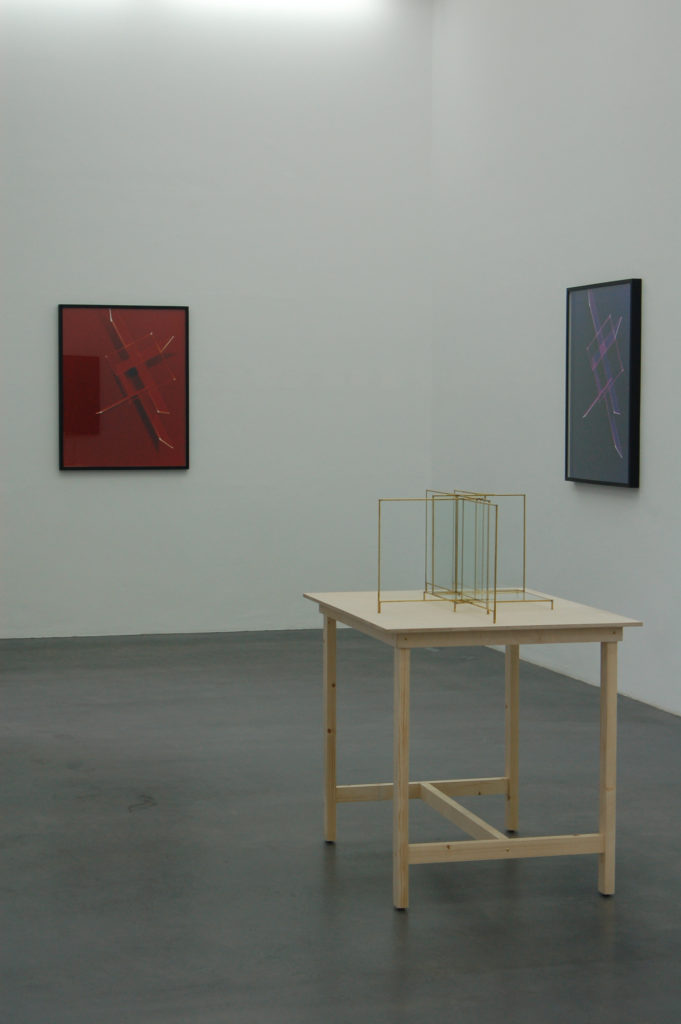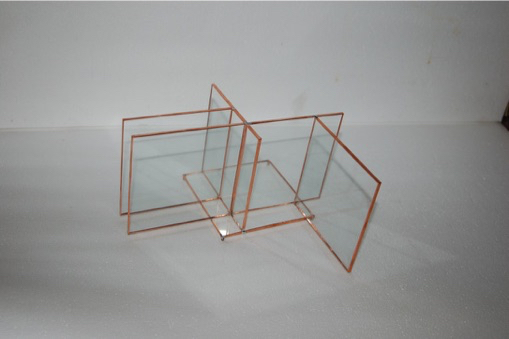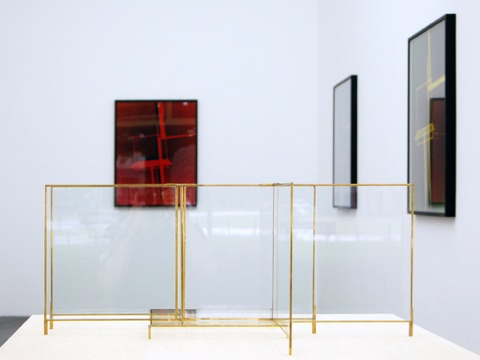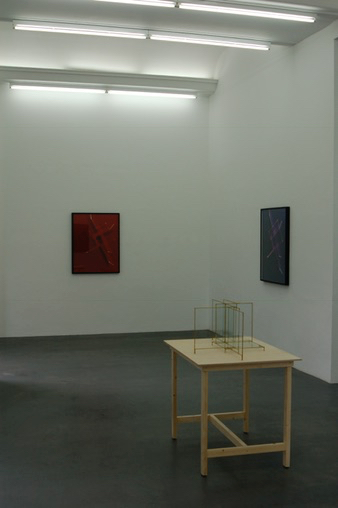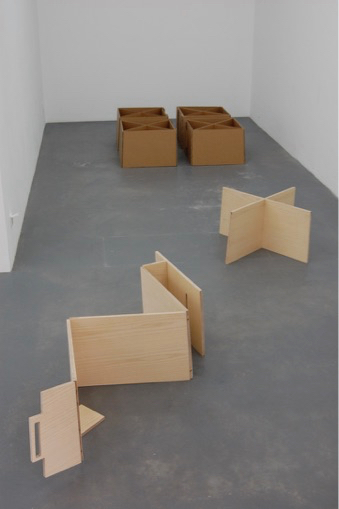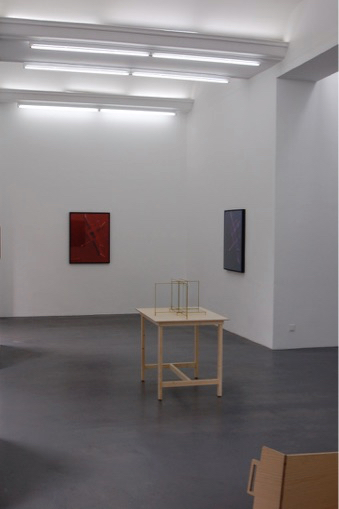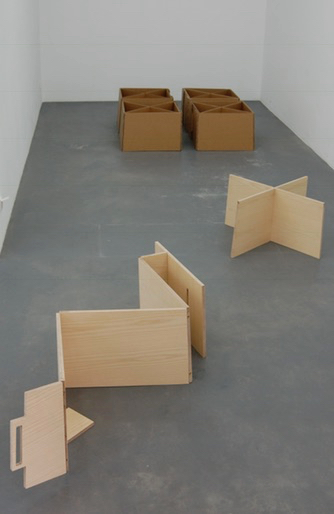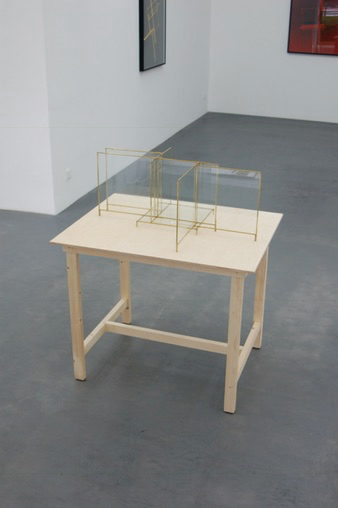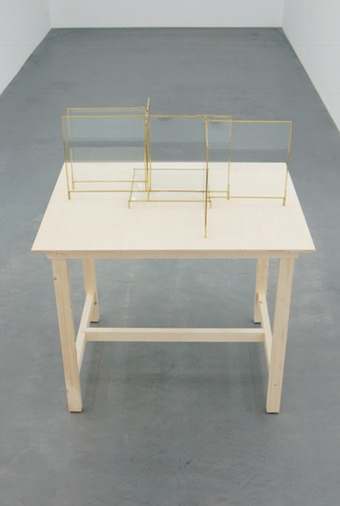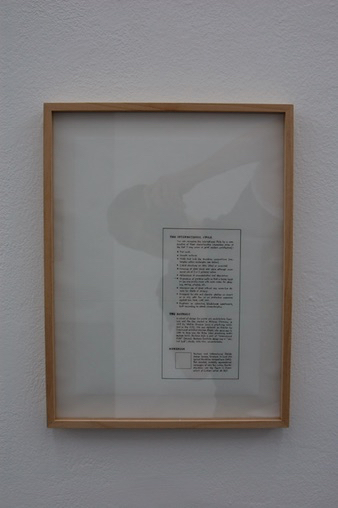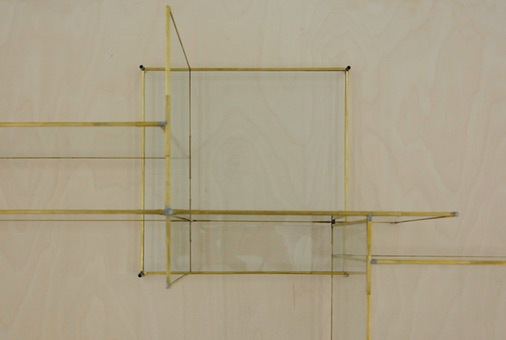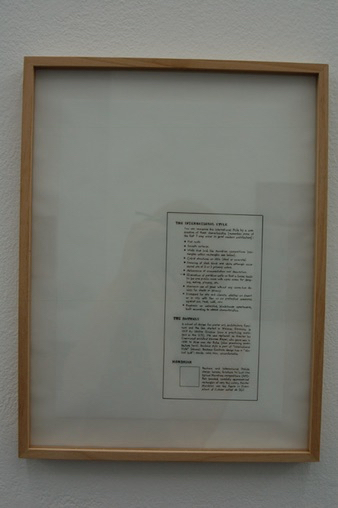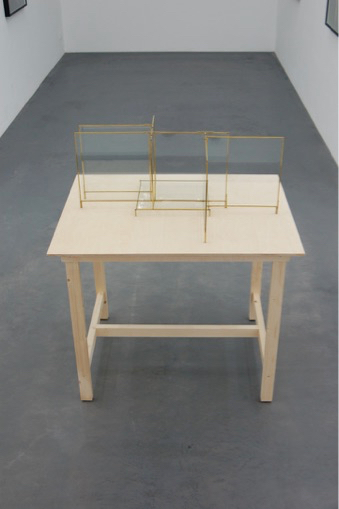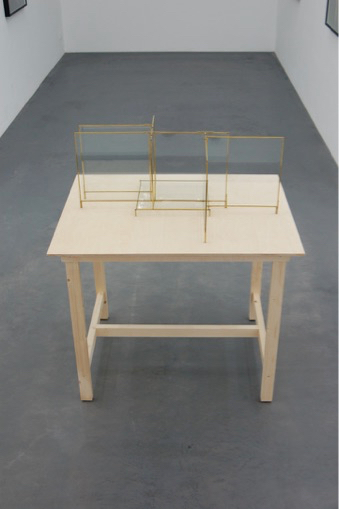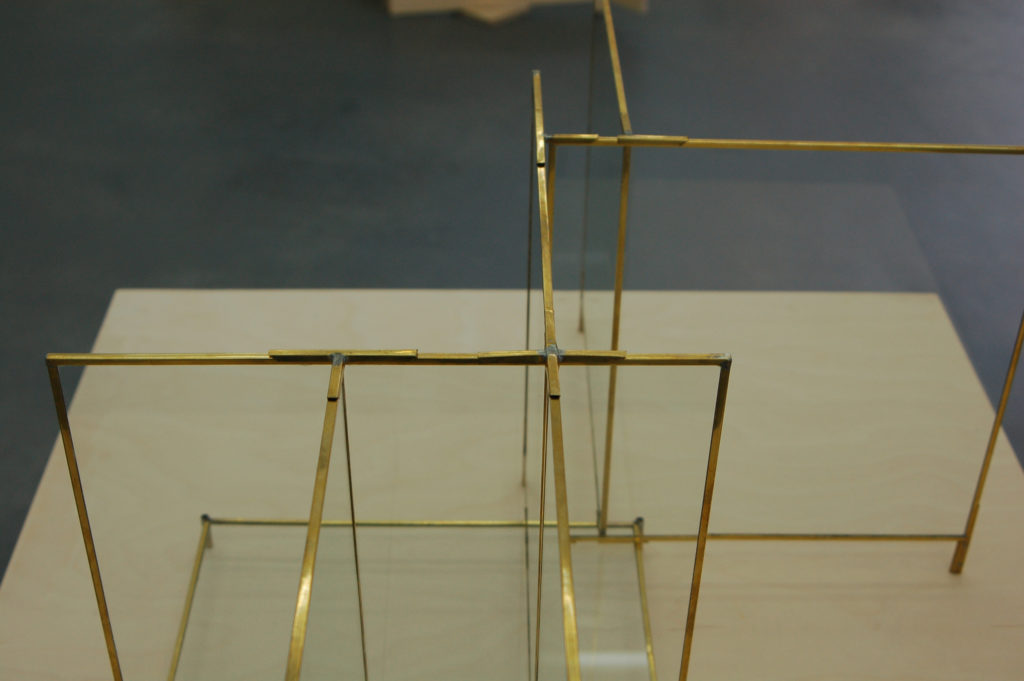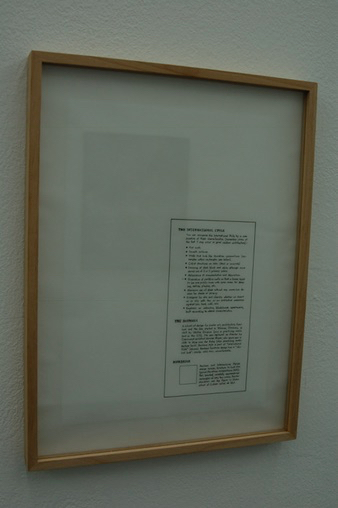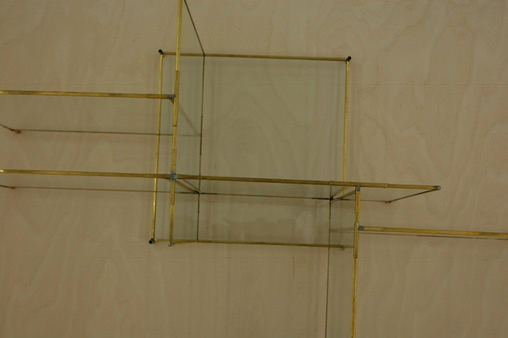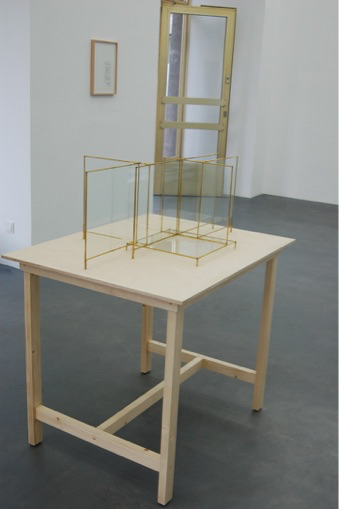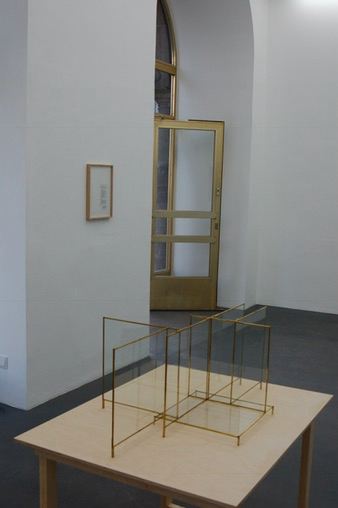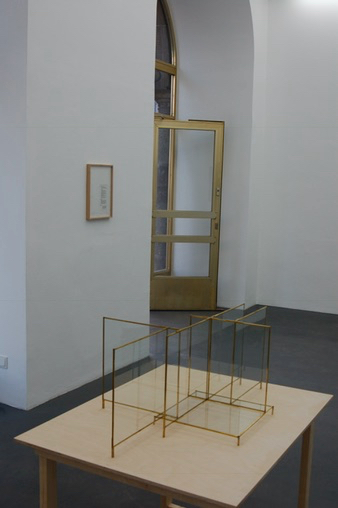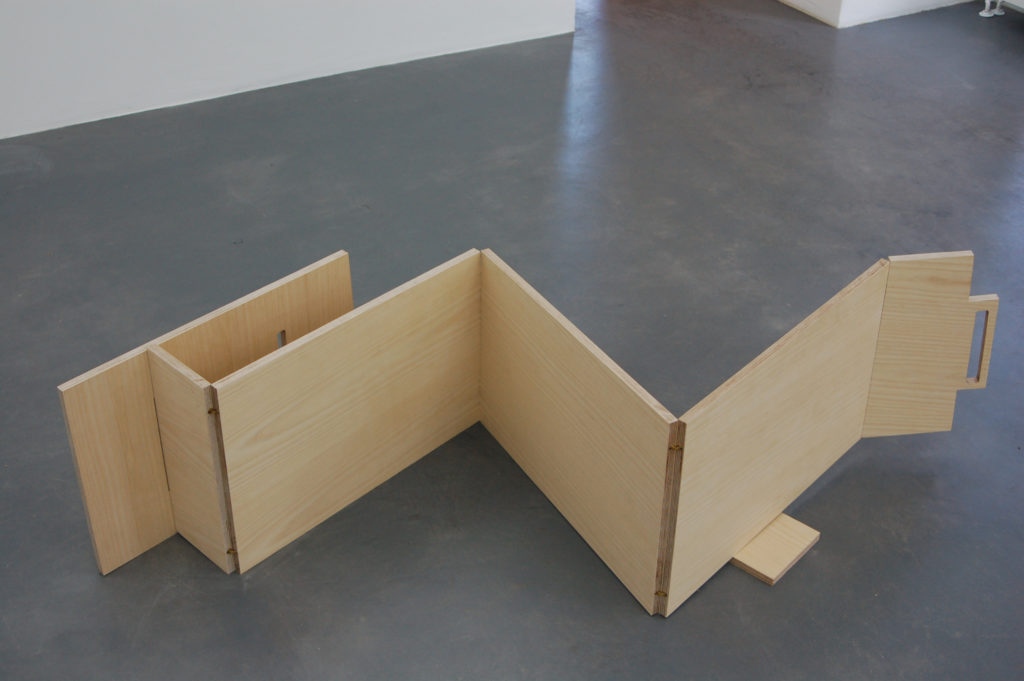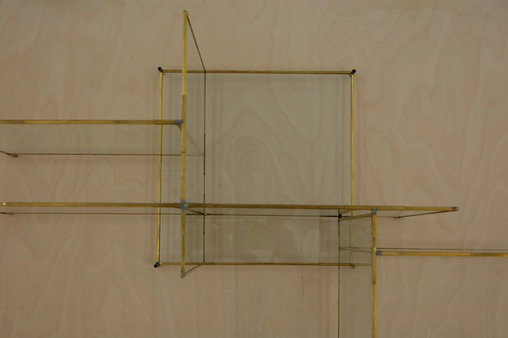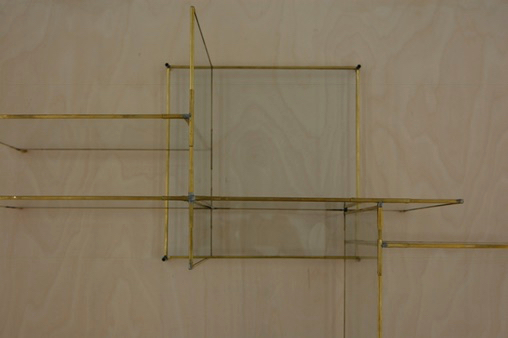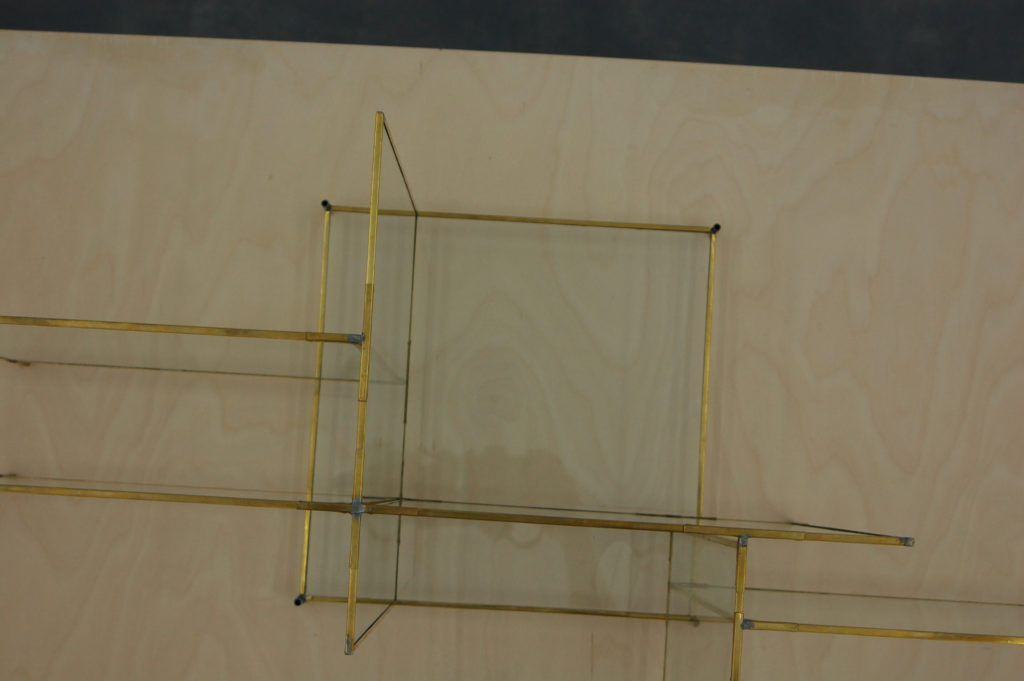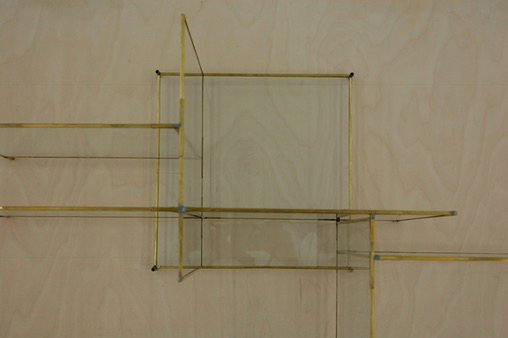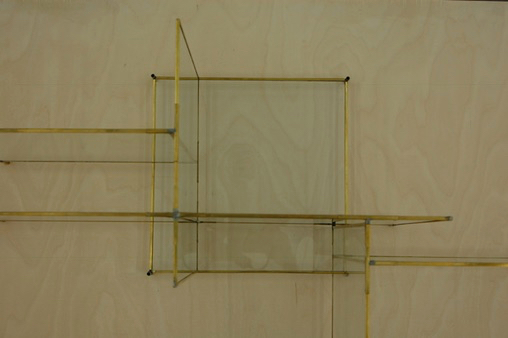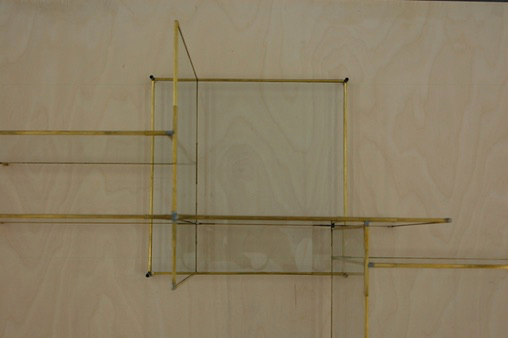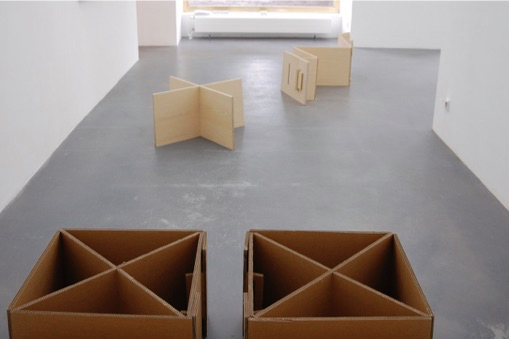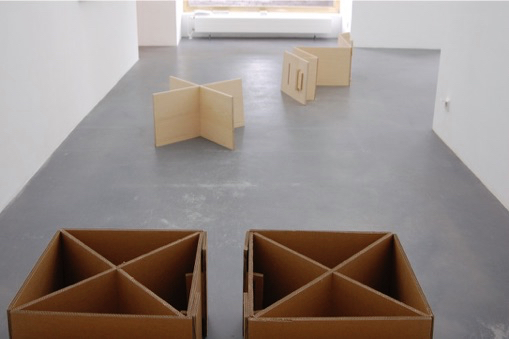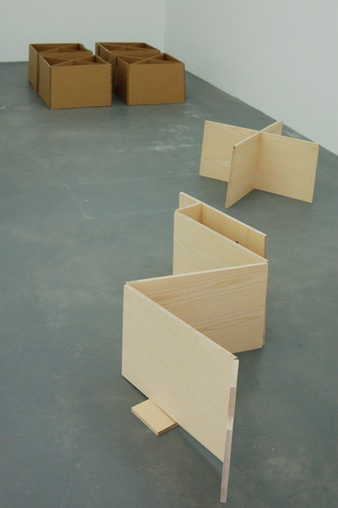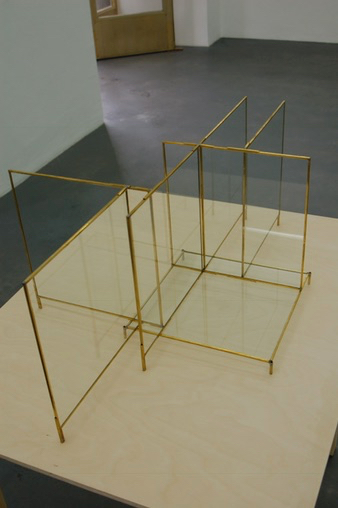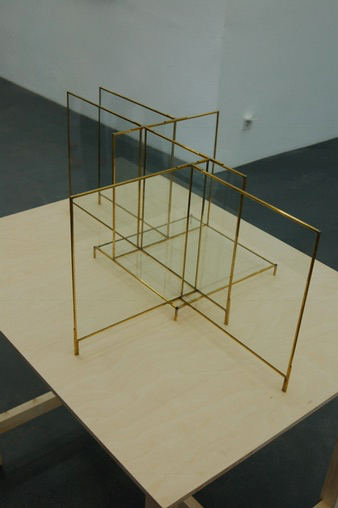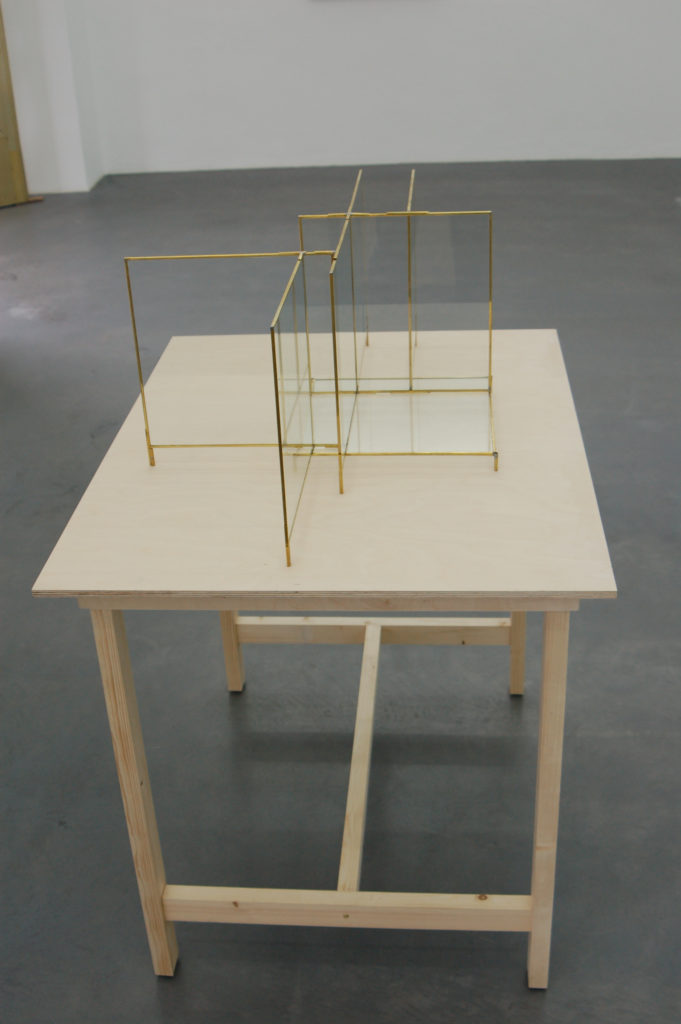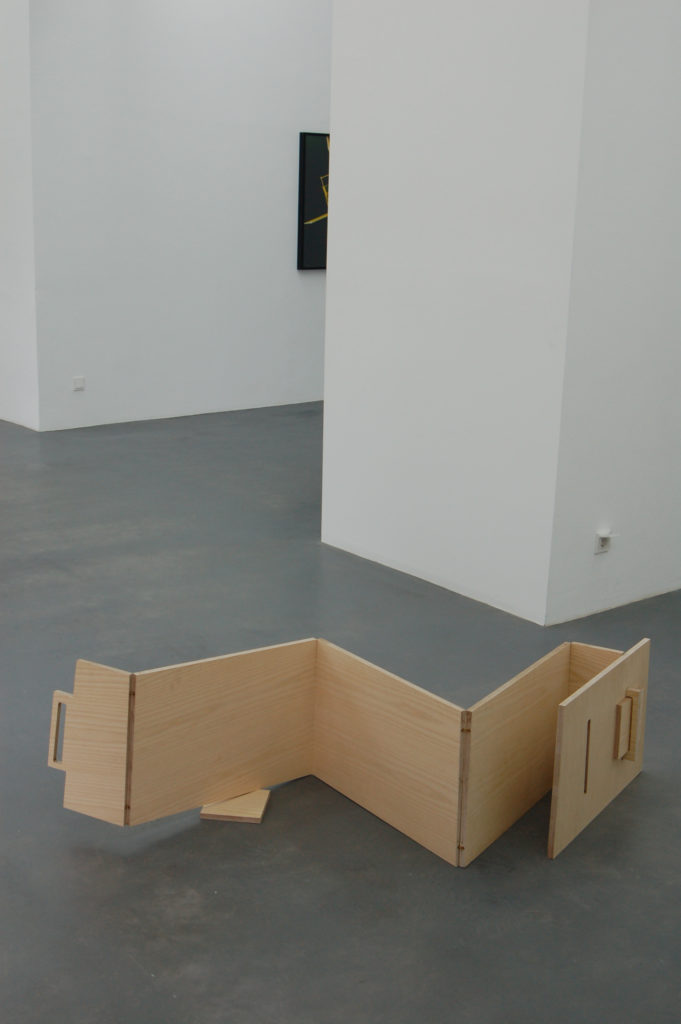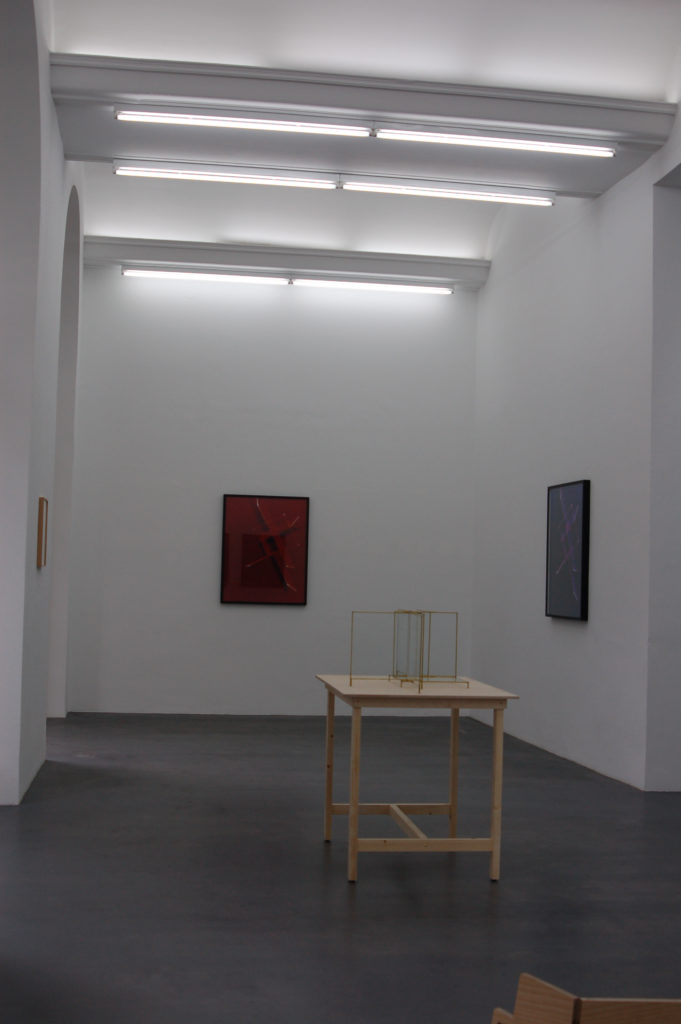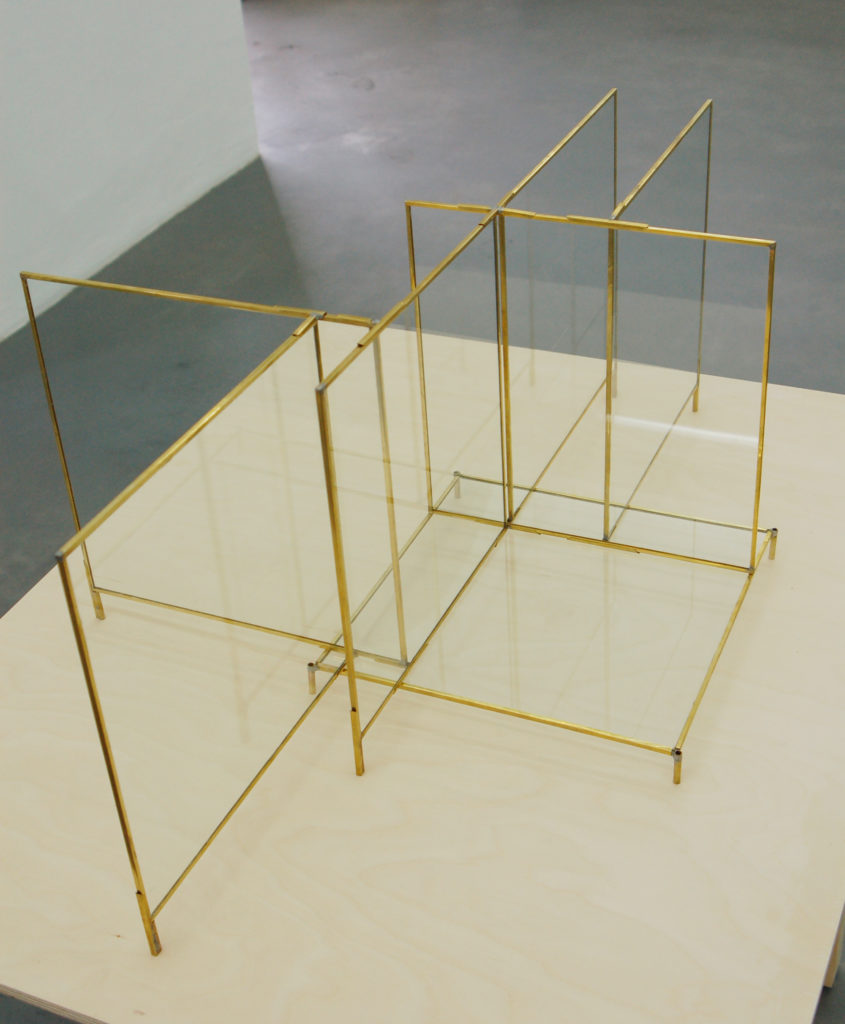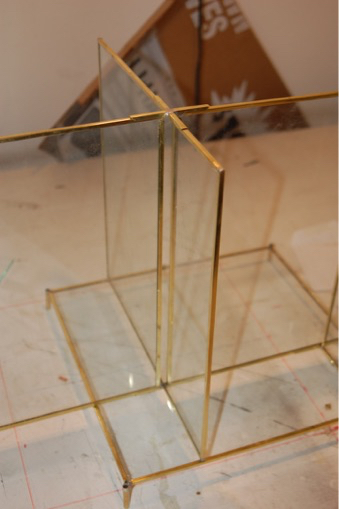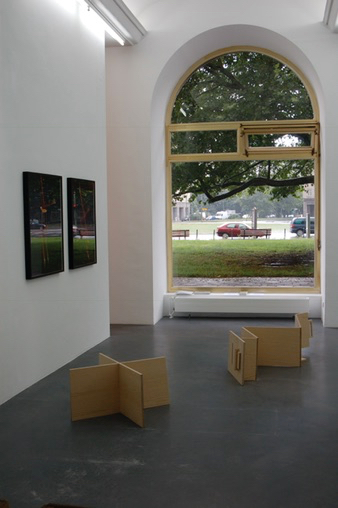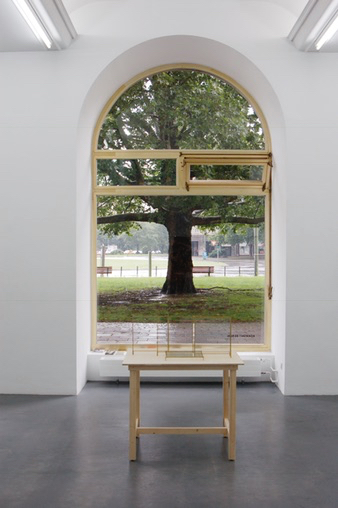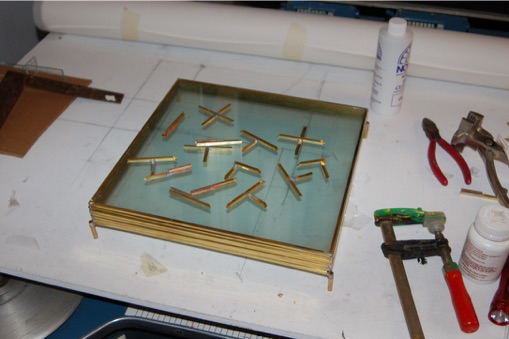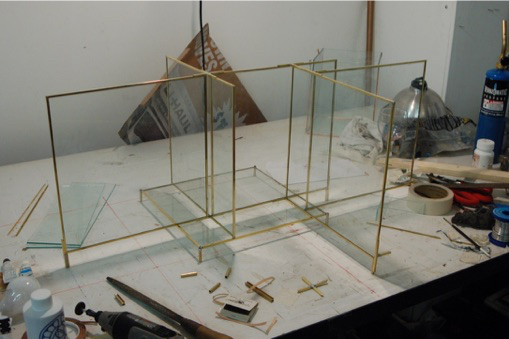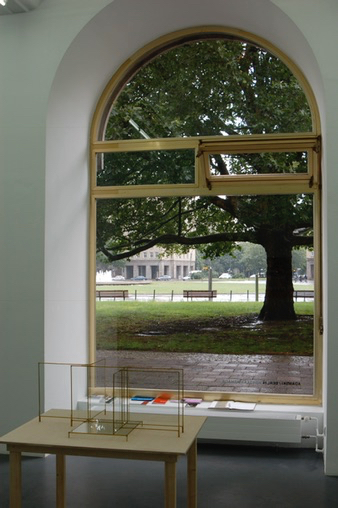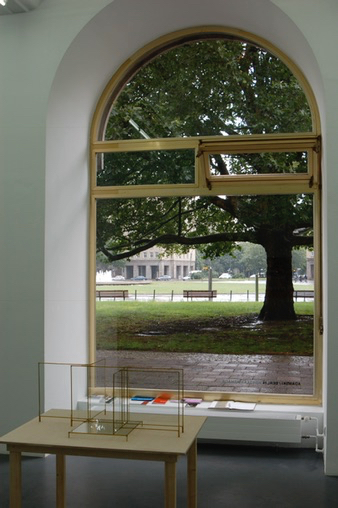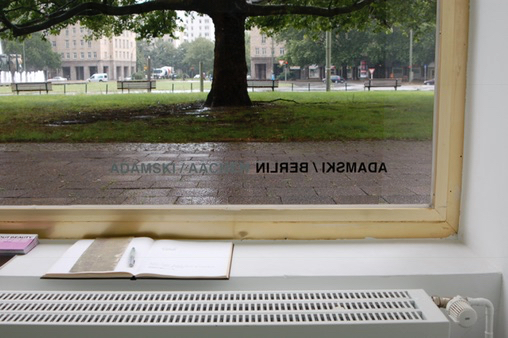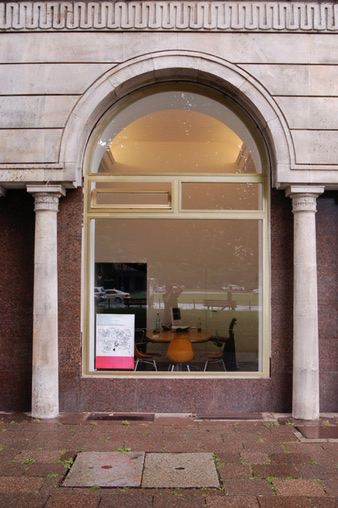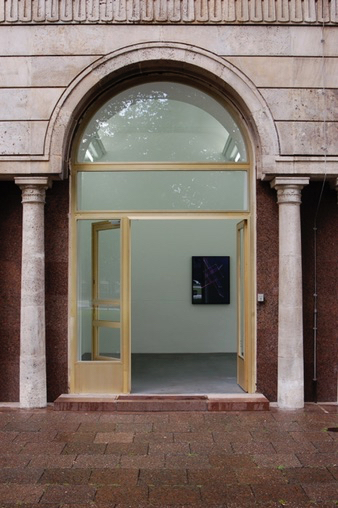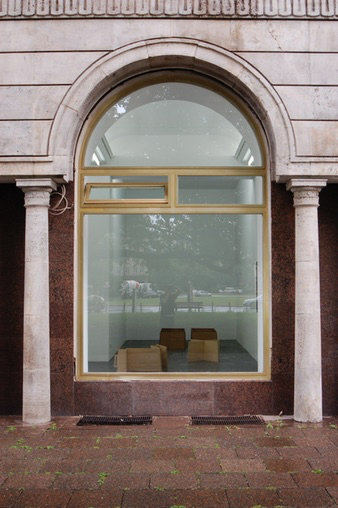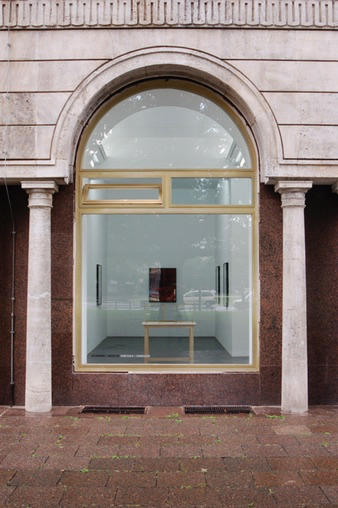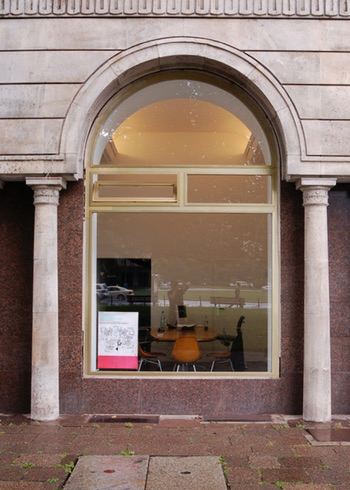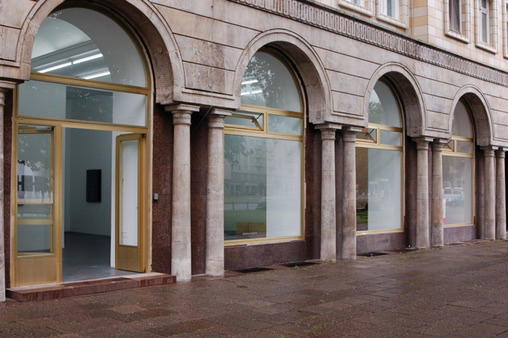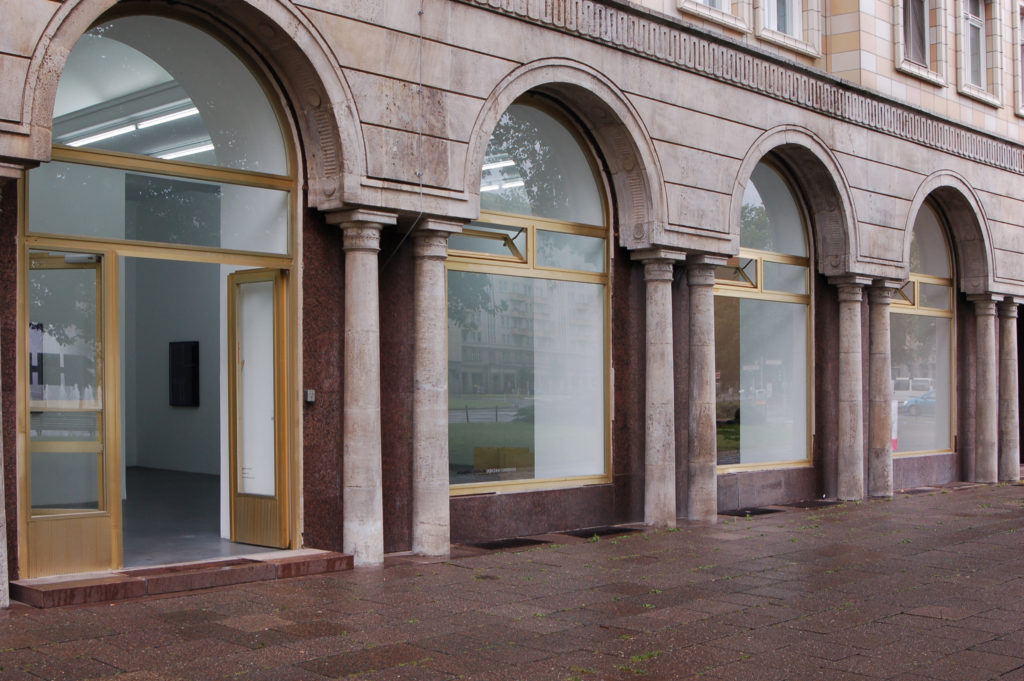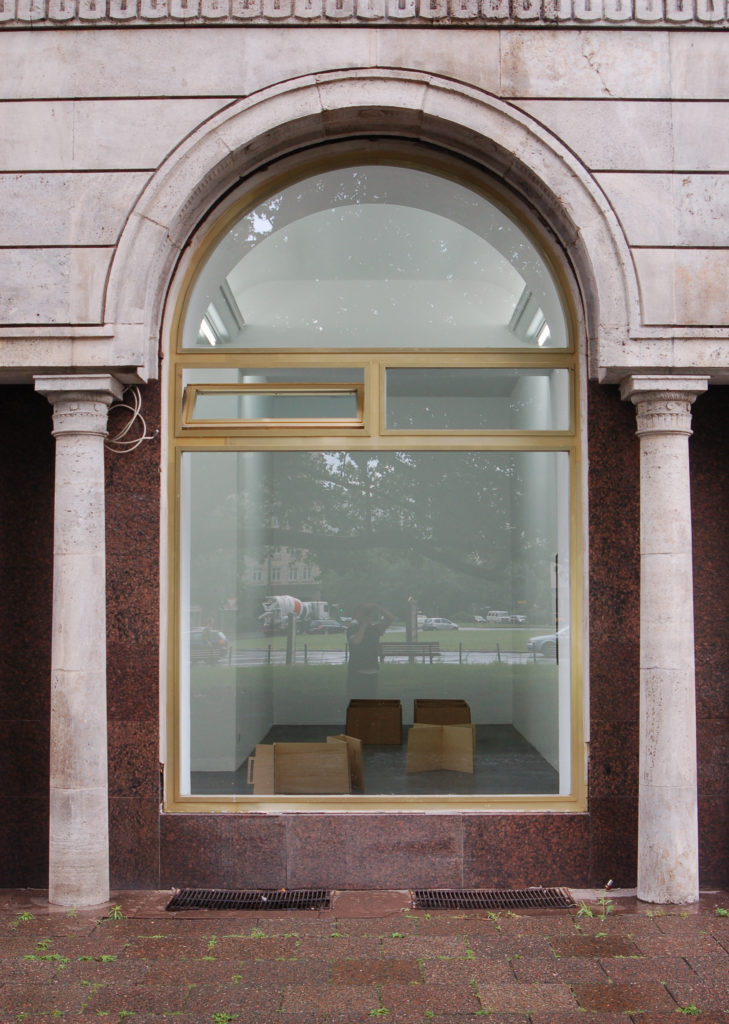For House Beautiful, I am taking advantage of the new Berlin gallery’s division into two spaces that almost mirror one another. I will present two sets of work that rely on similar but inverted processes of production.
On one side, I will install a group of work entitled House Beautiful made up of a model-scale multiple sculpture consisting of eight 30cm square pieces of glass framed in brass which can be positioned in multiple ways on another 30cm square piece that stands on four small corner posts. Using these glass panels it is possible to reconstruct the majority of Piet Mondrian’s square compositions within the frame of the base. This changeable sculptural form is in fact a tool for producing large-scale unique color Photograms. Eight photograms will be hung in the space. These are the result of positioning and exposing two configurations of the sculpture four times (once each under magenta, yellow and cyan filtration and one multiple exposure of each with each filtration exposed at different heights).
In the opposing gallery I am presenting Nomadic Morris a series of multiple cardboard pieces and a sculpture made of ash-laminated plywood panels hinged and grooved together. Each cardboard sculpture is a hybrid reconstruction of an untitled 1967 Robert Morris sculpture and the ‘simplest support’ described in James Hennessey and Victor Papanek’s ‘Nomadic Funiture’ of 1973. Like the apparently formal sculpture of House Beautiful this ply-wood sculpture (first made in collaboration with Daniel Riesman) is a tool for the production of other work. It is the template used to produce the infinitely repeatable cardboard sculptures.
The title of this show is taken from a popular American architectural magazine published by Hearst. The April 1953 edition was dedicated to laying out the design, cultural and life-style principles of ‘The New America’. It’s mission was to describe a distinctively American modern design style. This was to become the ‘modernism’ of 1950’s America stripped of any pre-war progressive pretensions Modernism may have had. This project literally gave form to a new capitalist (neo-liberal) utopianism emerging in America’s suburbs. The building in which Adamski’s new gallery (an import from Aachen, Mies’ birthplace) is housed was also built in 1953 by Hermann Henselmann working within another particularly ideological formal framework, Stalin’s neo-classical redirection of industrial modularity and efficiency.
A particular target of House Beautiful’s editor Elizabeth Gordon was Mies’ recently completed Farnsworth House which to her smacked of both communism and elitism. In her editorial “The Threat to the New America” Gordon published a list of points by which the reader might recognize the perilous influence of such design, a tell-tale sign of which (accompanied by a photo for reference) is that these:
Stylists design houses, furniture to look like typical Mondrian compositions (left): flat, banded, carefully asymmetrical rectangles of very few colors.
In this show a pen and ink tracing of Gordon’s International Style identification checklist serves as a key to this source and the formal language explored and exploded by the super saturated color photograms.
The inclusion on the other side of this show of Nomadic Morris serves as an opposing historical bracket. It finds it source in urban nomadism’s later critique of many of the conceits, difficulties and consequences of modernist design and the economic and political systems it embodied. This work was originally made for “Future Nomad” a show currated by Sara Riesmann at Vox Populi in Philadelphia which was envisioned:
…as a post-script to the urban nomad movement of the 1960s and 1970s when self-conscious design culture was made accessible to the uninitiated through publications like Ken Isaacs’ How to Build Your Own Living Structure. (Reisman)
An important component of this piece was my collaboration with Reisman’s father, Daniel Reisman, as a means of insisting on the inter-generational, do-it-yourself vision of urban nomadism’s own, perhaps lost, utopian vision.
I’m fascinated by structures and juxtapositions that develop from the purely formal combination of objects that in and of themselves belong to divergent discursive spheres. By combining things ‘mistakenly’ and pushing such combinations to their most absurd degree, the point at which they almost coalesce into seemingly meaningful or seamless objects, I think it’s possible to both enjoy the strangeness of such combinations and become aware of how exactly such formulations are used in other (political and historical) spheres, as a means of producing apparent connections. This is primarily an art of and about rhetoric, which in visual terms is expressed through contesting forms and formalisms.
–Brian O’Connell
New York, May, 2007.
